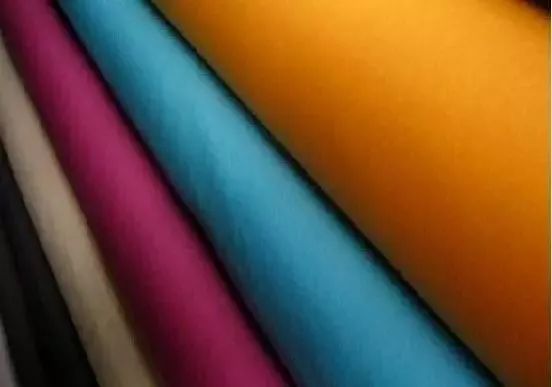Development status of thermal protection materials
Development status of thermal protection materials
Introduction
Protective clothing and protective materials As an important part of industrial textiles and labor protection, they have developed rapidly in recent years and have achieved important results in both social and economic benefits [1]. The reason is that people’s activities and production fields are constantly expanding, but the environment in some production or activity fields has various harms to the human body, and in severe cases, it can even be life-threatening. Therefore, people working in these special environments need to research and develop relevant materials and protective clothing to ensure personal safety. After recent years of development, there has been rapid development in the research and development of new materials, material processing technology and processing equipment. The industry has also placed higher requirements on protective clothing and protective materials. Compared with traditional protective clothing, new protective clothing and materials pursue multi-functional materials, high performance protection and high added value.
Among various types of protective equipment, thermal protective equipment is the most widely used. Its main function is to protect the human body from various thermal injuries in the thermal environment, such as heat conduction, thermal radiation, thermal convection and hot gas damage to the human body. Human skin is very sensitive to heat. When the skin surface temperature reaches 45°C, people will feel burning pain, causing first-degree burns; when the skin surface temperature reaches 72°C, blisters will appear on the skin, causing second-degree burns. The most severe burns will occur where the clothes catch fire, causing multiple second- or third-degree burns and seriously threatening personal safety. Therefore, thermal protective clothing must meet the performance requirements of flame retardancy, no melting droplets when burning, preventing heat transfer and wearing comfort. Moreover, it must be able to protect the wearer’s skin from damage in high temperature environments and reduce the heating rate of the skin surface, so that personnel engaged in related work in high temperature environments, such as firefighters, can resist thermal damage for a longer period of time and improve their work efficiency. , and successfully escaped from the high temperature environment. According to different use environments, thermal protective clothing is divided into the following four categories. As shown in Table 1-1. Thermal protection is to reduce the heat transfer speed so that the heat in the environment slowly moves to the surface. In actual situations, there are three main ways of heat transfer: conductive heat, radiant heat and convection heat. The heat transfer methods are different, and the principles of thermal protection are also different. The protective action principles of the three types of heat transfer are shown in Table 1-2.
Thermal protective clothing is usually composed of several layers of materials with different functions. Different functional layers are set according to different use environments. The outermost layer is protective fabric, which protects the human body and the inner fabric. There is a wet shield in the middle, which protects the inner fabric and the human body from the penetration of liquid water, which can cause more serious burns. The innermost layer is the thermal insulation layer, which has high thermal resistance and some special structures to increase the air content inside the material and enhance the thermal insulation performance [2].
The most widely used high-temperature resistant fiber is asbestos fiber, but its use is subject to many restrictions due to its carcinogenicity. As the industry’s demand for protective textiles increases, many new, high-performance, high-temperature-resistant fiber materials have emerged to meet the market. Including various organic fibers and inorganic fibers. Inorganic fibers include glass fiber, ceramic fiber, silicon fiber and carbon fiber, etc. Organic fibers include meta-aramid fiber, etc. Below, we introduce the organic high-temperature-resistant fibers and inorganic high-temperature-resistant fibers commonly used in the field of thermal protection.
2
Organic high temperature resistant fiber
Commonly used organic high-temperature resistant fibers include meta-aramid fiber, polybenzimidazole (PBI) fiber, polybenzoxazole (PBO) fiber, polyphenylene sulfide (PPS) fiber and melamine formaldehyde fiber. During use, organic high-temperature-resistant fibers can withstand thermal degradation and resist chemical erosion and oxidation to a certain extent. The upper temperature limit for use is higher, which can reach more than 400°C.

Research on meta-aramid began in 1956 and was industrialized in 1967. It is referred to as MPIA (abbreviation for poly-m-phenylene isop-hthalamide). The outstanding characteristics of meta-aramid fiber are good heat resistance, flame retardancy [3], abrasion resistance, and good electrical insulation [5]. The limiting oxygen index of aramid fiber is greater than 28 [4]. It operates at a temperature of 260°C. After 1000 hours of continuous use, its strength can still maintain 65% of its original strength; at a high temperature of 300°C, it can still maintain 50% of its original strength after 7 days of use; its zero strength is about 500°C; it is difficult to burn in a flame. It is self-extinguishing after leaving the flame. It can withstand the action of most acids, and its strength will only be reduced if it comes into contact with hydrochloric acid, nitric acid or sulfuric acid for a long time. It also has good stability against alkalis, but it cannot be in long-term contact with strong alkalis such as sodium oxyhydroxide. Research has found that when meta-aramid fiber fabric encounters deflagration and is rapidly heated, the evaporated water vapor and decomposed gas cause the softened polymer to expand, and the expanded material forms a carbon-containing foam insulator whose thickness can reach its original thickness. Ten times, when the flame leaves the meta-aramid fiber, the fiber will self-extinguish [5]. When the meta-aramid fiber is heated to 40It is a linear macromolecule composed of an amide group and a sulfone group connected to a para-phenyl group and a meta-phenyl group. Its molecular structure is shown in Figure 1 [10].
Aramid sulfon fiber is a new type of domestically produced high-temperature resistant fiber material. Since its inception, the development of aramid sulfon fiber products has attracted the attention of people from all walks of life. Aramid sulfone fiber has better thermal oxidation resistance, high temperature dimensional stability, heat resistance and thermal stability than meta-aramid fiber. Since there is a strong electron-attracting sulfone group on the main chain of the aryl sulfone fiber macromolecule, it has both para and meta structures through the double bond conjugation of the benzene ring, and there is a sulfone group on the macromolecular chain, so Has excellent heat resistance and flame resistance. As a high temperature resistant material, it can be used for a long time in a high temperature environment of 250°C and maintains its original performance. The fiber has a limiting oxygen index of 33.
Fabrics and clothing processed from aramid sulfone fiber have permanent fire-proof and heat-insulating functions. They can always maintain sufficient strength and wearability under harsh climatic conditions such as high temperature and humidity; they will not produce droplets when exposed to fire or high temperatures. The fabric is dimensionally stable and will not shrink or break strongly; it has comprehensive properties such as wear resistance, tear resistance, light weight and comfortable wearing [11]. Its heat resistance and flame retardancy exceed those of DuPont’s aramid fiber in the United States.
polyimide fiber

Polyimide fiber (polyimidefiber) is called aramid fiber. Refers to fibers containing aroimide in the molecular chain. Polyimide fiber is a type of polyimide high-performance polymer material with excellent thermal stability and flame retardancy [12]. Yilun 95 fiber is a domestically produced polyimide fiber in my country. Its thermal decomposition temperature can reach over 570°C, its glass transition temperature exceeds 370°C, and its limiting oxygen index is 38%. It is a permanent flame-retardant fiber [13] and is also produced One of the best materials for fire protection clothing. Polyimide fiber has good spinnability and can be made into textiles for various special occasions. Due to its high and low temperature resistance, flame retardancy, no dripping, self-extinguishing when removed from fire and excellent temperature insulation, polyimide fiber thermal insulation protective clothing is comfortable to wear, has good skin adaptability, is permanently flame retardant, and has a large size It is stable, safe and has a long service life. Compared with other fibers, due to the low thermal conductivity of the material itself, it is also an excellent thermal insulation material. Non-woven fabrics made of polyimide fiber are the most ideal fiber materials for making fire-resistant and flame-retardant clothing such as protective clothing for armored forces, flame-proof racing suits, and flight suits. This kind of nanofiber nonwoven fabric can also be used to make comfortable and warm functional clothing, such as military clothing, medical hygiene clothing, casual clothing to eliminate bad body odor, special clothing to prevent biological and chemical weapons, medical hygiene protective clothing, high-efficiency smoke protection masks, etc. [14].
Glass fiber air textured yarn
Glass fiber is a modern inorganic non-metallic material with a series of unique properties such as high functionality, high temperature resistance, and corrosion resistance [15-16], making it play an incomparable role in the field of thermal protection [17]. Glass fiber air-textured yarn has the following characteristics: (1) Imitation of staple fiber yarn, that is, its surface layer has geometric properties similar to those of staple fiber yarn, thus effectively improving the aurora and waxy feel of the yarn; (2) Swelling Looseness means that the volume of raw fiber bundles increases by 50%-150% after air deformation processing, which can improve the wearing properties of yarns and fabrics [17]. Glass fiber air-textured yarn has a low thermal conductivity (<0.12w/(m·k)), and its thermal protection performance is more than twice that of twistless roving, with a TPP value of 21.62cal/cm2 [18].








